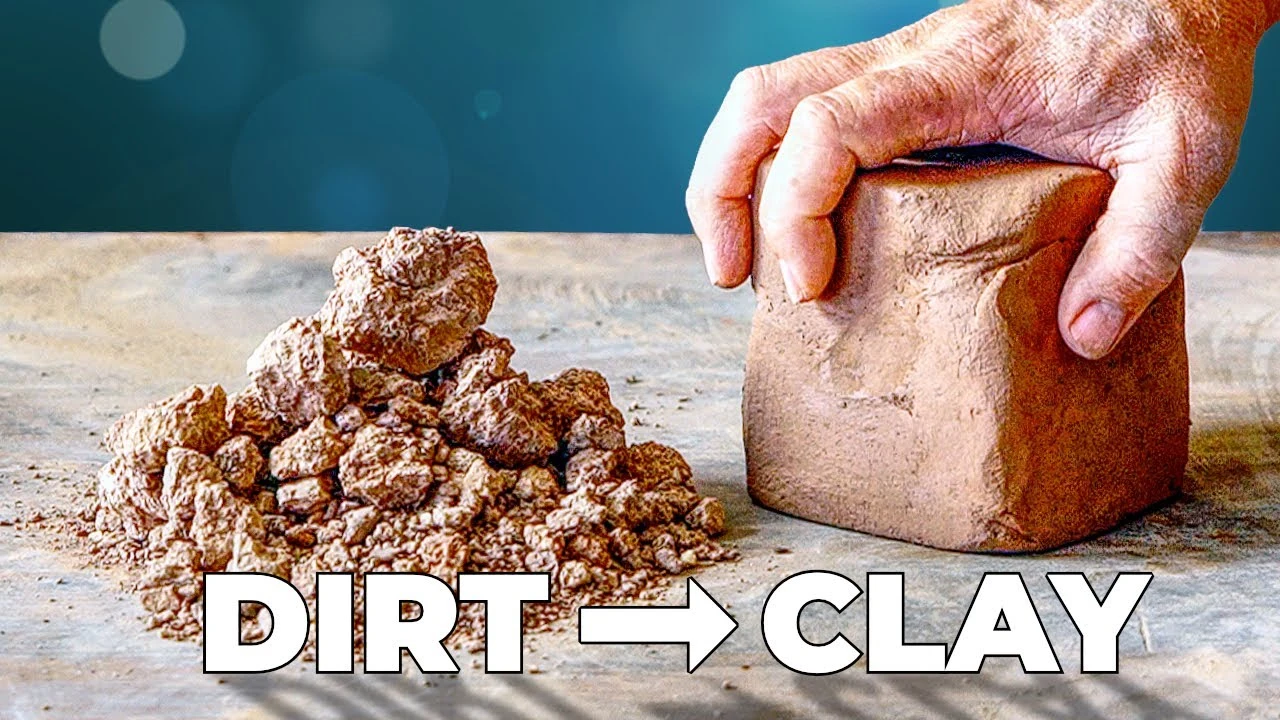46
Making clay is not that hard. Not too long ago it was part of most potters jobs to dig and process all the clay they used. Yet today it is almost a lost art. In this video I show you 3 methods for making clay at home, simply and easily.
Some clay processing equipment
Screen - https://amzn.to/3J5GdZy
Another screen - https://amzn.to/3Kbt3LS
Paint strainer bags - https://amzn.to/3NOONzk
Metate for grinding clay - https://amzn.to/3DGoczQ
Hand cranked mill for grinding clay - https://amzn.to/3DIjhP0
❤️ Please help support my channel
Channel membership https://www.youtube.com/c/ancientpottery/join
Ancient Potters Club https://ancientpottery.how/ancient-potters-club/
👕 T shirts and other merch - https://andy-wards-ancient-pottery.creator-spring.com/
🛍 Shop for pottery related goodies
Classes, tools and pottery are available at my online store: https://ancientpottery.how/shop/
📚 Improve your pottery skills
Check out my in-person pottery workshops and online masterclasses to improve your pottery making skills. https://ancientpottery.how/classes/
⭐️ Social media
Facebook - https://www.facebook.com/andywardpottery
Instagram - https://www.instagram.com/ancientpottery/
📬 Send me mail
Andy Ward PO Box 43601 Tucson, AZ 85733
0:00 What Is Clay?
2:02 Selecting the Right Dirt To Make Clay With
4:58 The 3 Methods For Making Dirt Into Clay
9:03 Tempering Clay So It Won't Crack
#wildclay
As an Amazon Associate I earn from qualifying purchases.



I think you’re overthinking this. The presence of water is required to make clay minerals, and water has covered just about the entire surface of the planet. I’m also pretty sure the people making clay over 10,000 years ago didn’t do a fine analysis of the raw dirt they refined their clay from. This video also showed 3 ways to refine clay, depending on the clay content. And given that the profile of soil generally includes some amount of clay (loam consists of less than 40%, deserts are often over 90% sand and still have clay) pretty much any natural soil that grows plants probably has some amount of clay.
So yes, you need specific minerals to make clay, they just happen to be almost everywhere plants, and thus people, are found. And no, this won’t give you pure clay minerals, but if the clay isn’t white, that’s already the case.
Your probably correct what the water is concerned, as I mentioned i am not a proper expert. But think in prehistoric times it was more a matter of “that spot near the river has some cool sticky dirt you can make things with” The clay soil below my parents chicken coop seemed pretty much usable as it came from the ground.
I think clay rich soil is common enough to not need to bother with low clay soil and sand but that could be a skewed perspective from my local area. If there really is no other way its useful to know that technically any dirt will contain something to extract.
Oh, absolutely. I imagine there are places with very little clay content, requiring the third technique the video showed to be used in ancient times, not unlike the extreme measures the Japanese had to use to to refine iron compared to many other places.